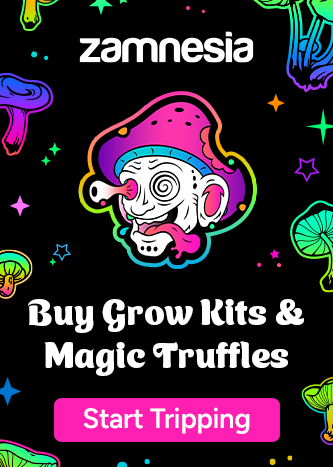12 important things to know before growing cannabis
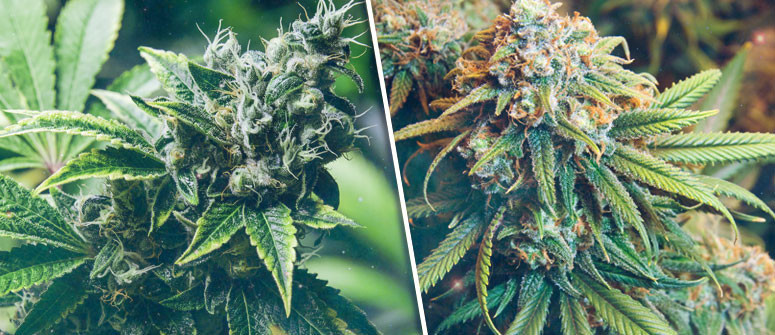
Growing cannabis is exciting. However, before you germinate your seeds, make sure you keep these 12 things in mind. You'll thank us come harvest time!
Growing weed is exciting. Whether you use it recreationally or medicinally, there is something special about sewing your own seeds and harvesting your very own buds.
But before you start your grow, it’s important to keep a few things in mind. Below are 12 things to know before you start growing your own weed to ensure you get the best possible results come harvest time.
1. UNDERSTAND THE BASICS OF CANNABIS
Before starting a cannabis grow, it’s vital you have a solid understanding of the cannabis plant.
While you don’t need to be an expert on everything there is to know about weed plants, make sure you at least understand the basics of the plant’s life cycle, nutrient requirements, and structure.
Here are some must-know facts about cannabis to help you get started. Before you think about germinating your seeds, make sure to get your hands on a good marijuana grow book and continue reading through our backlog of grow articles:
- Cannabis is a genus of flowering plants which can be either male, female, or hermaphrodite.
- Cannabis plants can be grown indoors, outdoor, and in greenhouses.
- In nature, male plants pollinate female flowers (or buds) to create new seeds. Most growers, however, will keep their females unpollinated to produce better buds.
- There are 3 main varieties of cannabis; indica, sativa, and ruderalis. All 3 vary in morphology and effects.
- Indica and sativa cannabis varieties are naturally photoperiod plants, meaning they flower based on how much light they receive. Ruderalis plants, on the other hand, flower automatically based on age, regardless of changes to their light cycles.
- There are 3 main phases to the cannabis life cycle; seedling phase, vegetative phase, and flowering phase.
- In nature, cannabis plants grow annually, usually beginning their life cycle between spring and the first days of summer. The length of a plant's life cycle can vary greatly (anywhere between 4-10 months).
2. KNOW HOW MUCH POWER YOU’LL NEED
Once you have a better understanding of the cannabis plant, it’s important to realise how much power you’ll need to keep your grow running. This mainly applies to indoor growers.
Remember, cannabis plants need a lot of light (up to 18 hours per day minimum). In order to run a successful grow indoors, you’ll need to power a quality grow light (most growers opt for 400-600W grow lights).
Apart from your light, you’ll also need to power other electrical equipment such as fans, extractors, and more. In some residential houses, this may cause a power overload, as residential power circuits are sometimes limited to roughly 1500w.
3. UNDERSTAND THE COSTS
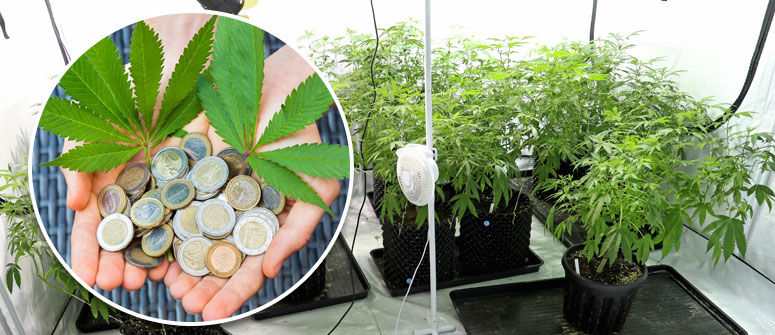
We’re not going to beat around the bush; growing weed costs money. And, depending on how professional you want to keep your grow op, you’ll likely need to invest in some expensive equipment to get you started.
The exact equipment you’ll need to grow weed indoors will vary depending on your skills as a grower and the size of your grow. Nonetheless, most indoor growers will need at least the following equipment, as well as pots, soil, and other basic grow accessories.
- Grow light
- Fan
- Grow tent
- Air filter
- Light reflectors
- Small ventilator
- Timer
- pH meter
Buying this equipment and running it will obviously take a toll on your back pocket. However, most of the equipment you’ll need to buy for your grow is reusable, and you’ll usually make your money back after just a few harvests.
Note: The costs of growing weed vary greatly. Some growers can get great results with simple $100 setups, while others will spend upwards of $1000 on a professional grow room.
4. UNDERSTAND DIFFERENT GROW METHODS
Cannabis can be grown in many different ways. Before you start your grow, remember to read up on various grow methods and pick one that is best suited to your skill level and budget.
Arguably the most common way to grow weed is in soil. When doing so, growers will add nutrients to the soil which the plant then absorbs via its roots. These nutrients can be provided via store-bought nutrient solutions or natural alternatives like compost.
Alternatively, some advanced growers may opt to grow their plants in mediums other than soil. Methods that use mediums other than soil (such as coco coir, sand, water, or even misted air) are referred to as hydroponic methods.
Deciding on which way to grow weed is completely up to you. However, inexperienced growers are generally advised to start with simpler, soil-based methods.
5. PICK THE RIGHT GROW SPACE
Picking a grow space is an essential part of growing weed. You’ll want to think about your grow space well before you start growing.
You’ve essentially got 2 options for where to grow weed; indoors and outdoors. Both have their pros and cons.
Growing outdoors is great because it allows you to avoid a lot of costs. After all, by harnessing the natural power of the sun, you won’t need to buy a grow light. Plus, as long as your plants get a nice gentle breeze, you also won’t need to install any fans or extractors.
The major downfall to growing outdoors, however, is that you have no control over the climate and light exposure of your plants. Also, outdoor operations are likely to attract more attention, which may be problematic if you live in an area where the cultivation of cannabis is illegal.
Indoor growing also has its fair share of benefits. First and foremost, your plants will be out of plain sight and therefore less likely to attract any unwanted attention. Plus, you’ll also have complete control over the climate in your grow space, allowing you to adjust things like temperature, humidity, and light hours to create the ideal environment for your plants.
The major downfall to growing indoors, however, is the cost of buying and maintaining all the necessary equipment, as well as the increased costs of electricity. Growing indoors also means you’ll have to deal with space restrictions.
6. UNDERSTAND THE SIGNS OF NUTRIENT DEFICIENCIES, PESTS, ETC
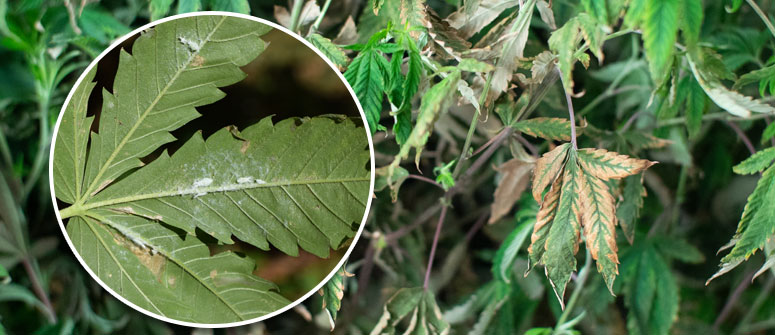
Cannabis, just like other plants, is susceptible to a variety of pests and diseases. Plus, the plant also has complex nutrient, light, and water requirements which, when not met properly, can affect the health of your plants and the size/quality of your harvest.
Luckily, if you learn to identify the tell-tale signs of pest infestations, diseases, or nutrient deficiencies, you’ll be able to treat them quickly and minimize their effect on your plants. Here are some common signs that there’s something wrong with your plants:
- Nutrient deficiencies: Signs include red stems, pale foliage, stunted growth, curling and/or spotted leaves, and or/malformations.
- Pests/diseases: Signs include white spotted leaves (caused by bite marks), twisted leaves, curling leaves, yellow/brown spots on leaves and foliage, brown or black buds, white powder on foliage, and more.
7. UNDERSTAND PLANT NUTRIENTS
All plants need nutrients to survive and grow, and cannabis is no different. You’ll want to know the basics of how and what to feed your plants before you start your grow.
The 3 basic nutrients cannabis plants need to survive are nitrogen, phosphorus, and potassium (NPK). Most nutrients solutions will contain these compounds in varying various concentrations.
Apart from nitrogen, phosphorous, and potassium, cannabis plants can also benefit from nutrients such as:
- Calcium
- Sulphur
- Magnesium
- Manganese
- Boron
- Copper
- Zinc
- Molybdenum
- Iron
Knowing the proportions of these nutrients and how you can manipulate them is vital for healthy plants and big harvests. You’ll likely accumulate this knowledge once you’ve got a few harvests under your belt. Until then, remember to consult a good grow book and read through our other grow articles.
8. GROW LIGHT BASICS
If you’ve decided to grow indoors, your grow light will serve as the heart of your operation. There are a variety of different grow lights available to you, and you’ll want to know which to choose well before you start your grow.
Here are some of the most popular cannabis grow lights available to you:
- Compact fluorescent lights (CFLs): These are inexpensive lights commonly used by first-time growers. CFLs lack the power of professional grow lights and usually produce smaller harvests.
- Fluorescent Lighting (T5 / T8): T5 and T8 flourescent lights are more apt for growing cannabis. However, these lights usually give off lower light intensities than needed, meaning you’ll have to install them very close to the tops of your plants.
- LED grow lights: LED lights are the most expensive option available to you. These lights can produce great results and may also help keep your power costs in check. However, they may not be feasible for smaller grows given their price.
- Metal Halide (MH) and High Pressure Sodium (HPS): MH and HPS lights are relatively cheap and produce great results, making them one of the most popular options for indoors growers.
9. PICKING THE RIGHT STRAIN

There are 1000s of cannabis strains out there. Before you start your grow, you’ll want to research the different strains out there and choose one that best suits your grow space and skills as a grower.
The difference between strains can be huge, affecting everything from a plant's morphology to the effects of its buds. Make sure you read up on some of the different strains available to you on our strain database and choose something that suits your grow space, skills, and smoking preferences.
10. KEEP YOUR GROW SECRET
If you’re lucky enough to live in an area where cannabis has been legalized, this may not apply to you. If not, mark our words and keep your cannabis grow a secret.
Sure, growing your own weed is fun and exciting, and you’ll probably want to tell your friends about it. But remember, the repercussions for cultivating cannabis can be huge, so you’ll want to keep your grow op on the downlow as much as possible. The last thing you’ll want to deal with is an unexpected knock on your door from the police.
11. MONITOR YOUR PERFORMANCE
When you’re new to growing cannabis, it's important you keep tabs on all your hard work. Hence, we always recommend you take the time to document the progress of your grow.
How you do so is up to you. A simple option is to take photos of your plants on a weekly basis to document their growth and progress. Alternatively, you may want to keep a grow journal in which you note down specific details about your grow, such as the nutrients you’re using, your light schedule, and any events like pest infestations etc.
Documenting the progress of your grow allows you to keep tabs on all the various factors affecting your plants and how you dealt with them. This is especially important for new growers as it allows them to revisit their work and improve their processes.
One extra remark on this one: If you grow weed in a place where it is illegal it might be a good idea NOT to monitor your performance. When caught by the police you don't want them to find a notebook with all your grows from the last 5 years including the amounts you harvested in that time. They will use it as proof for sure.
12. KNOW HOW TO HARVEST
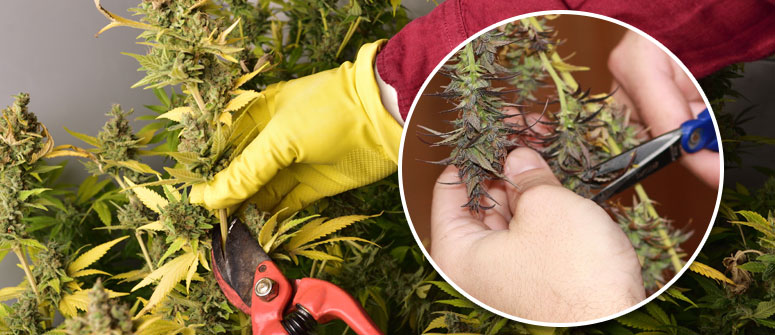
Last but not least, before you start your cannabis grow, you’ll want to be sure you know what to do come harvest time.
First of all, you’ll want to know the different stages of harvest and how they can affect the potency and effects of your buds. Buds that are harvested earlier, for example, tend to have more uplifting effects, while buds harvested later are said to have more relaxing, sedative-like effects.
Plus, you’ll also want to know what to do with your buds once it comes time to harvest them. After you’ve taken your buds from a plant, you’ll need to know how to trim, dry, cure, and store them to ensure the best results.
GET GROWING!
So, there you have it; a rundown of all you need to know before you start growing your own cannabis. Now that you’re up to speed, it's time to order your seeds and get planting!



